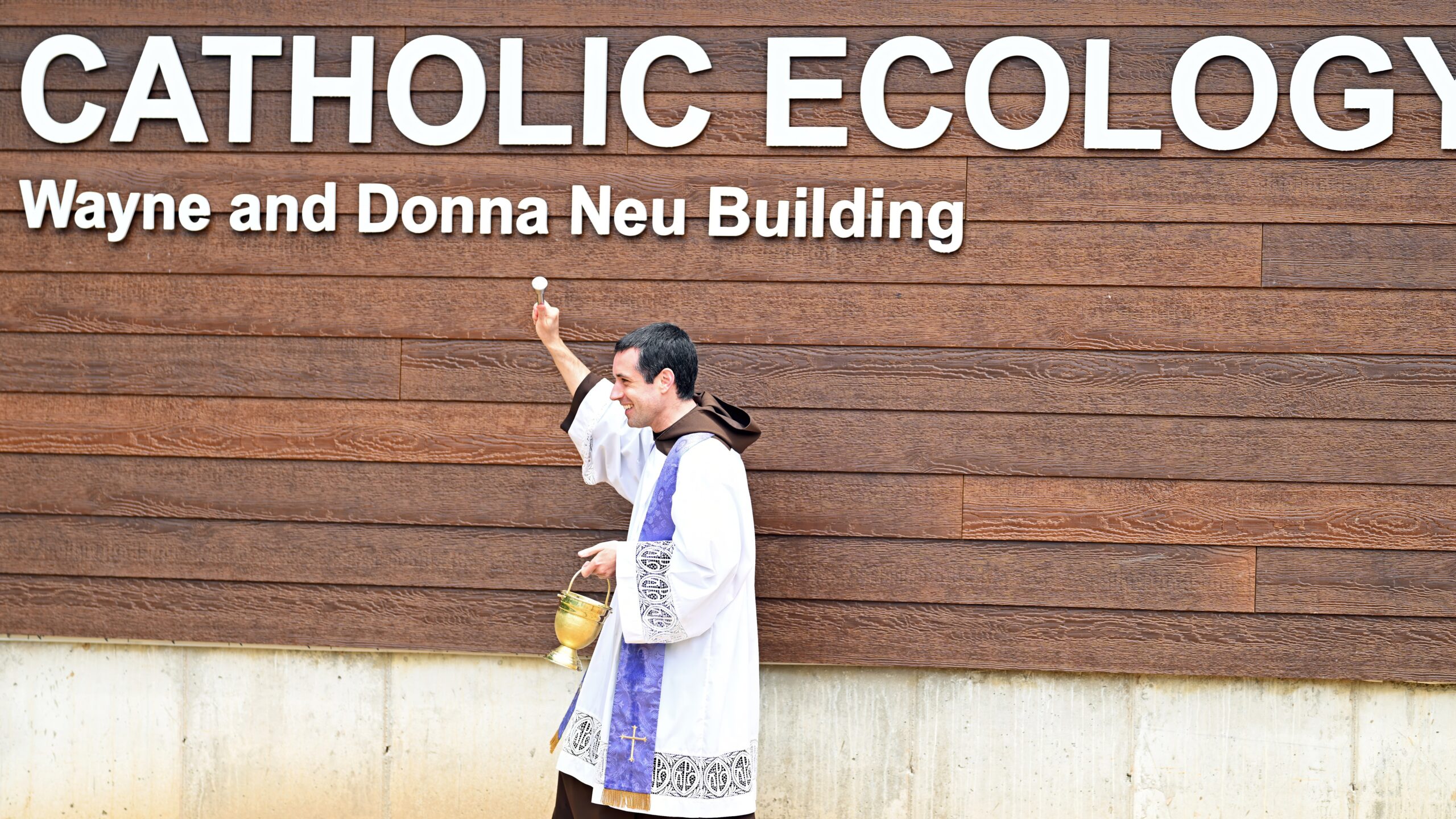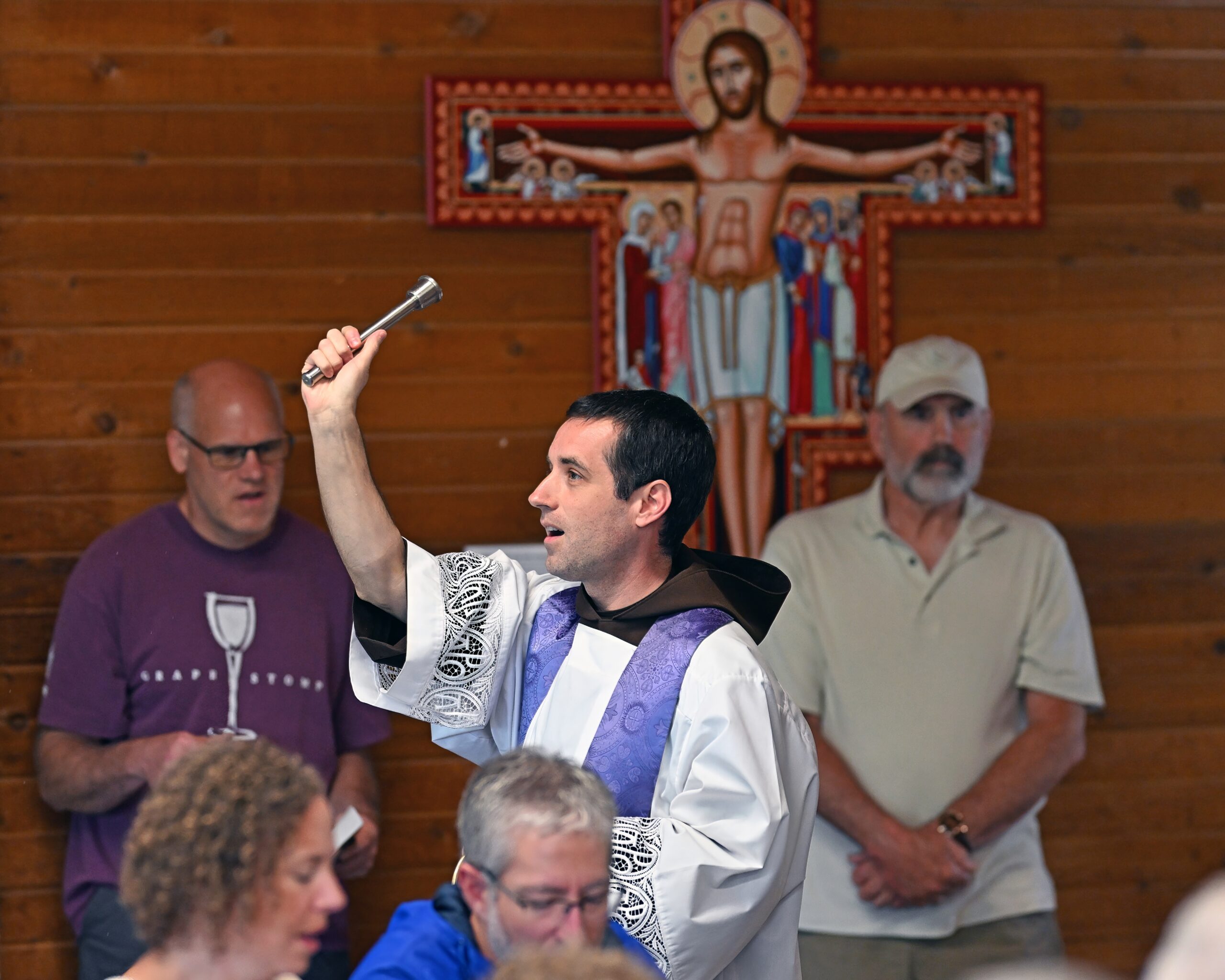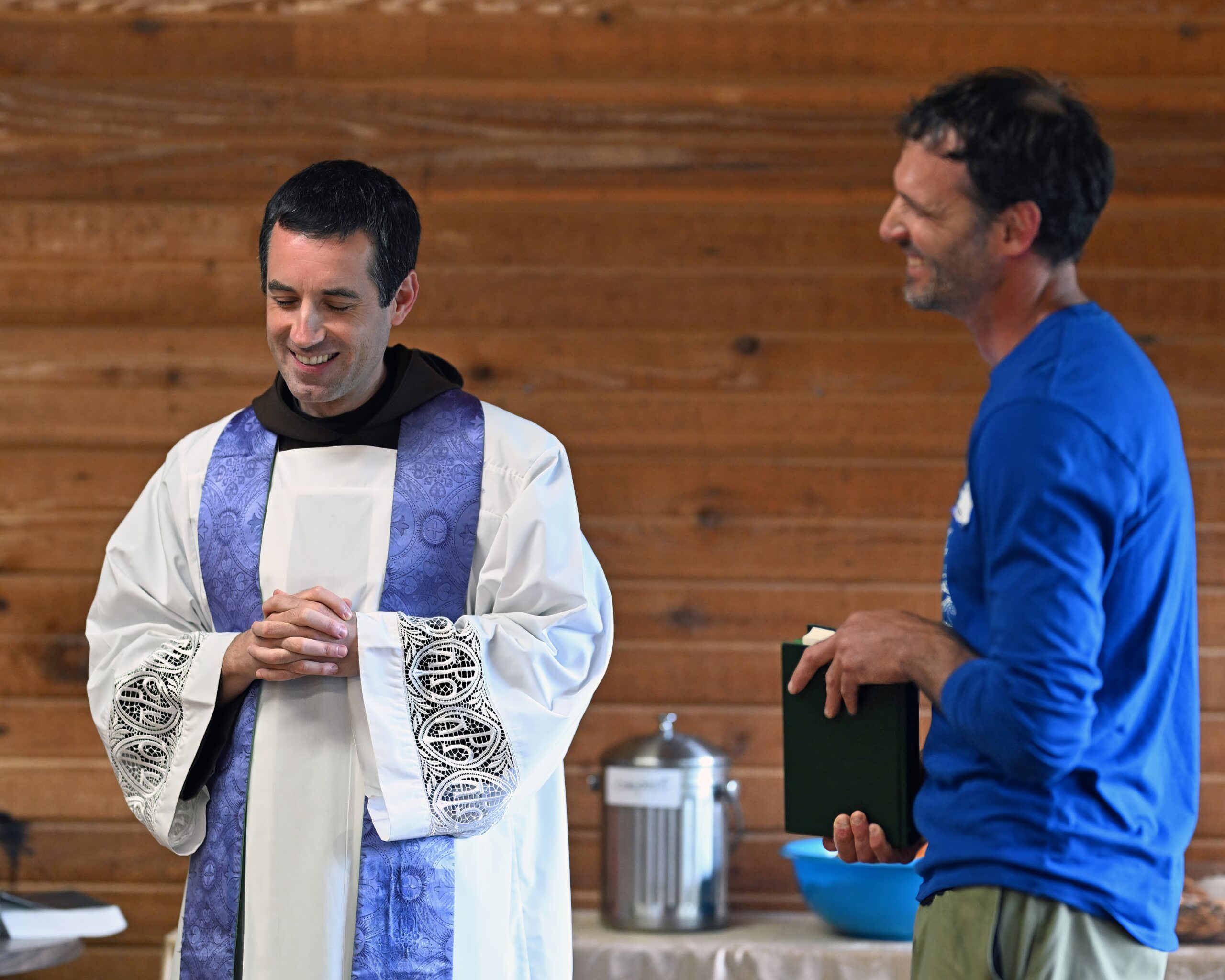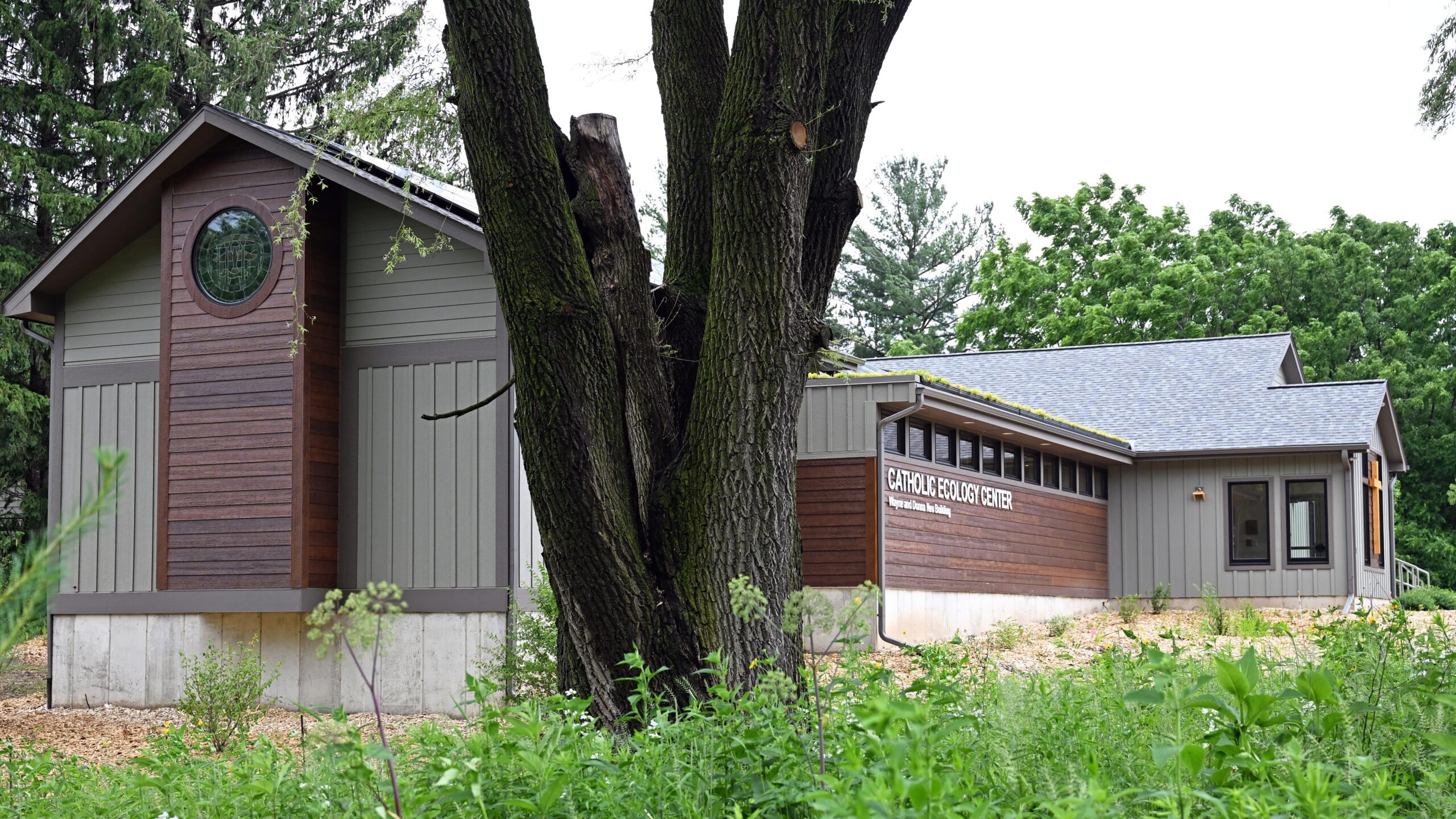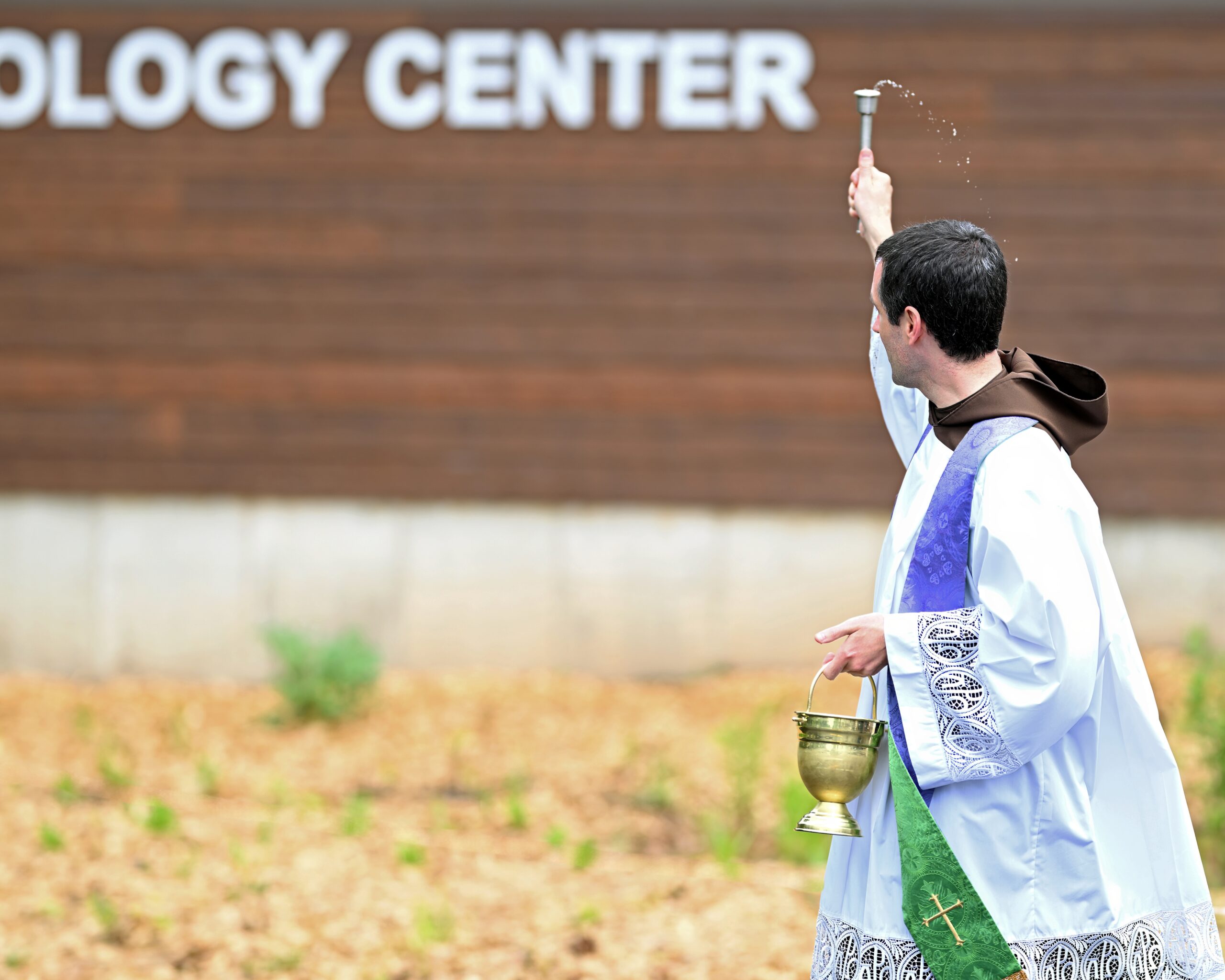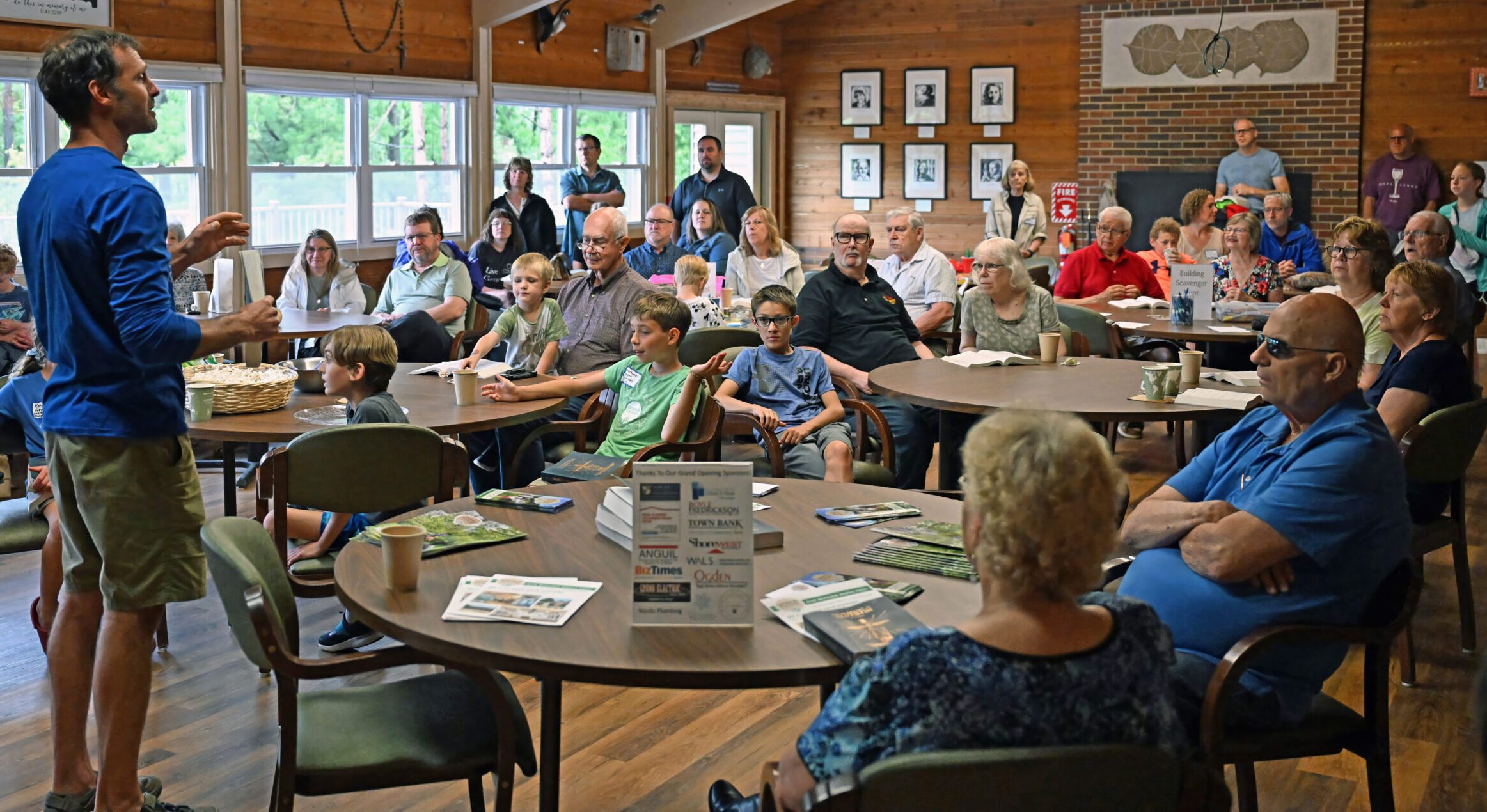
Catholic Ecology Center Founder and Executive Director Joe Meyer speaks during an open house event the weekend of June 22-23. (Photos by Andy Gilicinski)
When recounting the history of the Catholic Ecology Center, Joe Meyer likes to say: “Bring me your atheists.”
“I’ll show them the last five or six years,” said Meyer, the founder and executive director of the CEC. “Without the Holy Spirit, there’s just no way this would have happened. You can see God’s hand in all of this.”
It was just three years ago the CEC first purchased its property on County Road NN in Neosho, just a few minutes away from Holy Hill, and began offering educational and formational programming at the former Girl Scout camp. In that time, the organization has welcomed more than 10,000 individuals through its doors and on its trails, working to help people encounter God’s love and truth in the beauty of his created world.
It’s been clear for some time that more space was needed for the ministry, and ground broke on a 3,500-square-foot expansion to the property’s main building Oct. 9. Construction wrapped up this spring, and the public was invited to tour the new Wayne and Donna Neu Building on the weekend of June 22 and 23.
“I’m just humbled and so grateful to be a part of everything that’s happening, this amazing journey that the Holy Spirit is clearly in control of,” said Meyer. “And just to see how it’s impacting thousands of people and will into the future. We’re just getting started.”
During the open house Saturday, June 22, Fr. Michael-Joseph Paris, O.C.D., blessed the building, and Meyer offered group tours for attendees.
“We want the building to be an educational piece both about sustainability (and to) inspire wonder and curiosity, but also just draw our hearts and minds to God,” he said.
On the tour, visitors were able to learn about many of the building’s sustainable features, like the geothermal heating and cooling system, which essentially uses the constant temperature of the ground to moderate the temperature of the building. Meyer noted that 9,000 feet of tubing runs 20 feet below the ground, bearing warm fluid away from the building, allowing the heat to dissipate into the ground. The fluid returns to the building at a cooler temperature.
“The heat pumps are capturing that, and that’s what’s used in the forced air system — so you would recognize it as no different (from a traditional heating and cooling system),” said Meyer. “It’s amazing what these units can do. The technology has gotten really good today.”
Permanent educational mounts on the hallway walls inform visitors about the building’s water conservation capability, solar panel array and sustainable building materials. The 3,500-square-foot addition was constructed using recycled and reclaimed materials wherever possible. The chapel and breakout room feature flooring made of recycled cork bark, which can be recycled or composted after its lifespan. The countertop in the welcome area was made of pressed sunflower seed hulls, a wood alternative that is 100 percent biodegradable.
All furniture in the new addition is previously owned, including bookshelves, couches, chairs and tables. Even the church pews, stained glass windows and statuary in the new Holy Family Chapel are recycled or reclaimed, as are the altar bells, monstrance and vestments. Only the altar itself is newly built, handcrafted using local walnut and featuring an altar panel designed by Meyer’s wife Andrea, who is an artist.
The chapel is also adorned by three restored oil paintings dating from 1862 that were originally from the now-closed St. Mary’s Church in Woodland, located just a few minutes from the CEC. The Neosho Historical Society came into possession of the paintings — depicting the Annunciation, the Holy Family, and St. Anne and the Blessed Mother — and offered them to the CEC, who engaged Conrad Schmitt Studios in New Berlin to restore them.
“There’s so much history here from different parishes, both things that were donated to us or things we acquired through their church closing,” said Meyer.
The new addition allows the CEC to expand its current programming and be able to offer more programs simultaneously, said Meyer. Just two days before the open house, the National Eucharistic Pilgrimage’s Marian Route made a stop at the building, and the large group of adorers could be accommodated thanks to the removable wall between the chapel and the breakout room.
“We just want it to be a joyful thing in the archdiocese, speaking to the hope and the vibrancy of the faith, and to be a witness to all the people that have decided to show up here,” said Meyer of the CEC.
The CEC is open weekdays from 9:30 a.m. to 4 p.m., Saturdays from 10 a.m. to 4 p.m. and Sunday from 11 a.m. to 3 p.m. Upcoming educational programs for this summer include gardening workshops, day camps and the annual CEC Campout in August. For details, visit catholicecologycenter.org.

